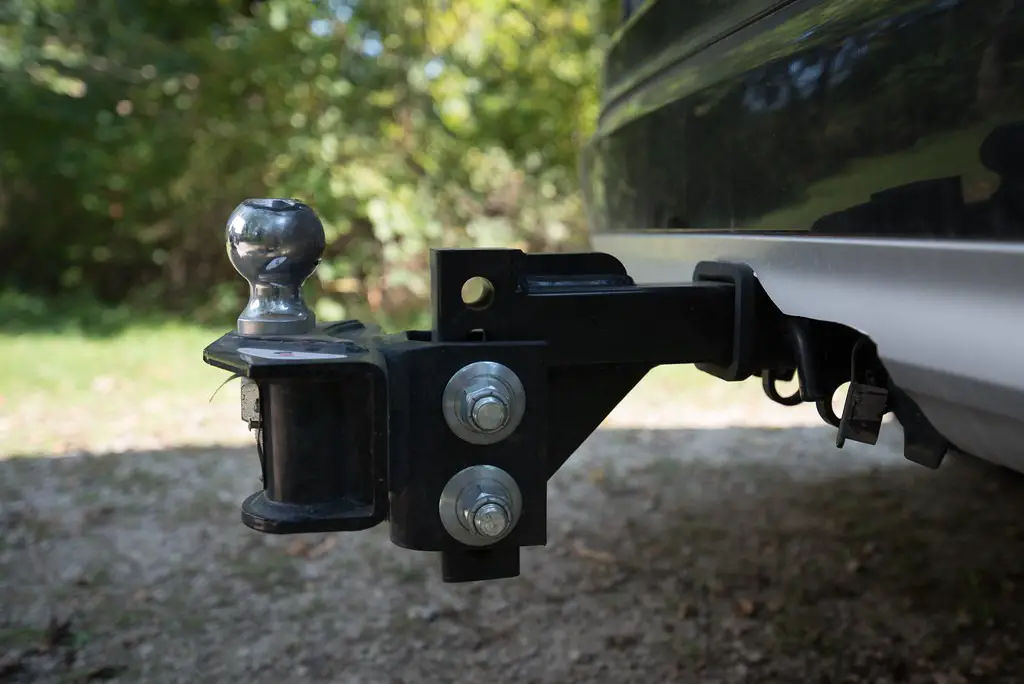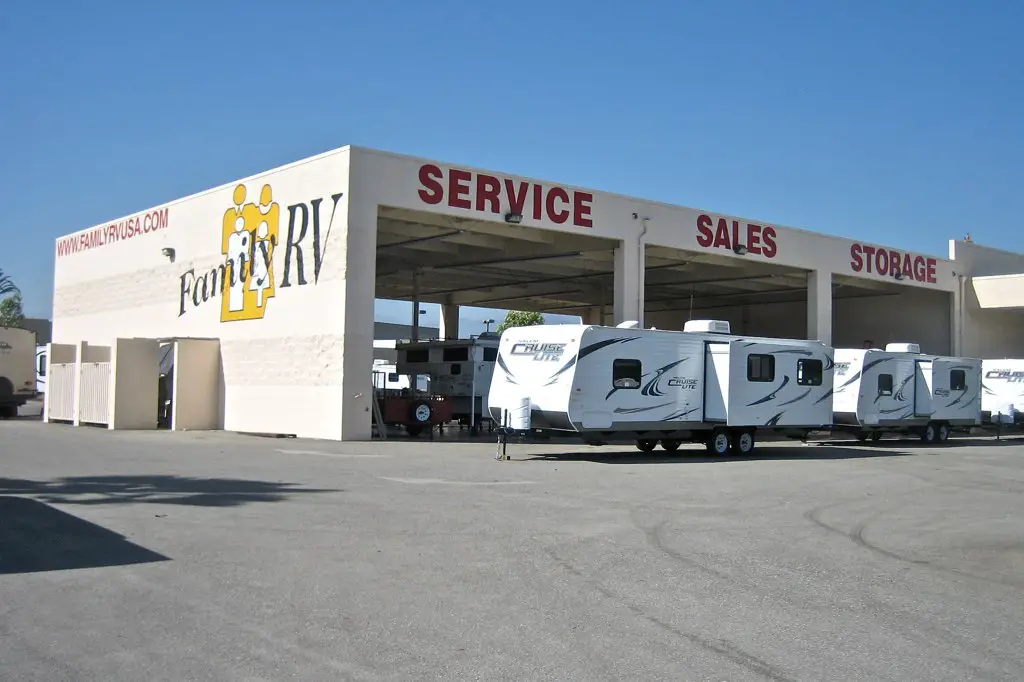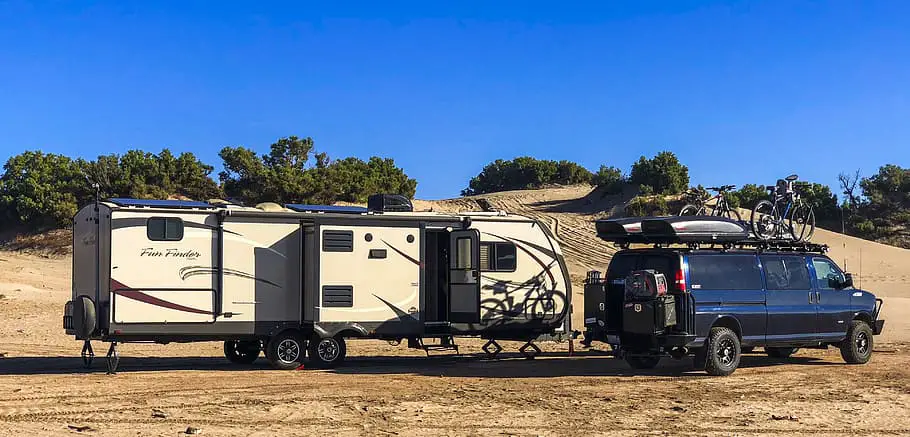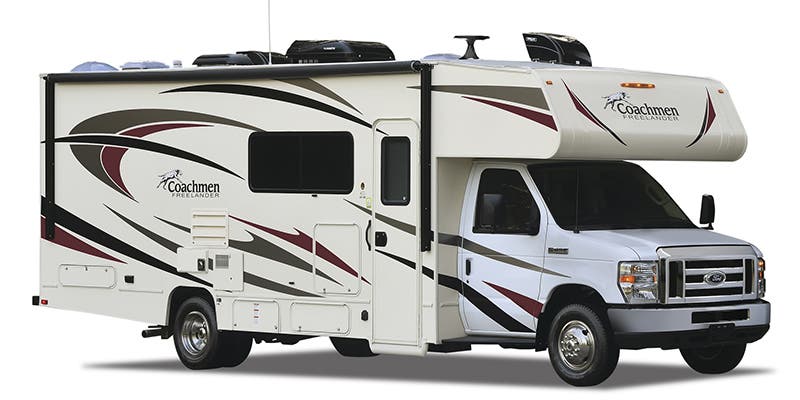Can a class C RV really pull a car?
This is the million-dollar question asked by many new to this lifestyle of RV life. The simple answer is YES, as long as the weight of the vehicle in question is under what your Rv and hitch are rated to tow. RV towing has become more popular as of late due to the need for travelers to get out and explore. RV parks have also become tighter and many choose not to try their RV just to run and get supplies.
First, check the weight of the vehicle that you are wanting to bring along. You will hear many RV enthusiasts refer to this vehicle as their TOAD vehicle.
Next check your owner’s manual for how many pounds your RV is rated to tow.
Lastly, make sure your hitch can also handle this amount of weight and is in good working order. Inspect the hitch for damage, loose bolts, and connections.
RV towing is a great option as long as you follow the numbers and use a little common sense.
Related: Best RV tow vehicles, the ultimate guide

How much weight can a class C RV tow?
Every RV manufacturer has different ratings for their select models. Whether or not you can tow your car is not a one size fits all answer. A class C RV tow rating can range anywhere from 4000 lbs. up to the super C class where certain models can tow as much as 20,000 lbs.
Are there different ways to tow a vehicle behind my RV?
If you are looking to bring a vehicle along on trips so you have transportation for excursions without breaking camp, you have several options. You can flat tow, use a tow dolly, or tow on a trailer behind your RV if the rating numbers add up.
Flat Tow
Flat towing, also called “four-down towing” or “dinghy towing”, involves attaching a tow bar to a suitable car, SUV, or pickup and letting the vehicle roll along behind the motorhome on its own four tires (thus “four-down” towing).
This way of towing is safe to perform if your vehicle is made to be towed by this method. To find out if it’s okay to flat tow your vehicle, consult your Owner’s Manual. If a vehicle is not made to be able to be flat towed, doing so can cause damage.
Tow Dolly
A tow dolly is a small trailer that supports 2 tires in the air from the vehicle being towed. The other 2 tires will roll freely on the ground. The dolly connects to the hitch of the tow vehicle and is designed specifically for one purpose – pulling vehicles.
The 2 tires in the air sit in a small indentation in the dolly and then strapped down securely. A tow dolly may also have a few more safety features like a brake system and lighting features. Especially in regions where these are mandatory regulations, always check first.
Trailer
Car haulers and equipment trailers are designed with lower deck heights and are adapted for safe and easy vehicle transport. Connected to the hitch of the tow vehicle and riding on 2 tires depending on the weight of the vehicle. Larger trailers may come with 4 or more tires for heavier jobs.
What to know before you select your towing option
We learn earlier that a class C or most motorhomes can tow a car, SUV, or even a light truck, but should you? It can be extremely dangerous for an RV to tow more than it can safely control and stop.
You do the math!
- Occupant and Cargo Carrying Capacity (OCCC) – Maximum allowable weight for all occupants (including the driver), plus the weight of all food, tools, water tanks, gas tanks, and personal belongings. If you are already carrying close to this, you will need to opt for a small tow-behind vehicle (also known as a toad).
- Max Hitch Weight – The amount of weight the tow hitch can handle. Don’t exceed this.
- Trailer Tongue Weight – The weight that is placed on the hitch ball of the RV. Don’t exceed this either!
- Towing with a dolly or car trailer: Factor the weight of these items into your hitch weight and tongue weight.
RV Towing: How to Calculate Towing Capacity
To calculate your vehicle’s towing capacity, you’ll need to know the full GCVWR (Gross Combined Vehicle Weight Rating). This weight is the vehicle you plan to tow with and the trailer you plan to tow. This weight is combined together with all the cargo each will carry, from people to wiper fluid.
Then you’ll need to know your tow vehicle’s curb weight – the weight of the tow vehicle itself when filled with gas and all the other fluids it consumes while driving.
Subtracting the curb weight from the GCVWR gives you the vehicle’s towing capacity. Manufacturers will stress that you should never exceed your vehicle’s towing capacity. We would add that, for safety reasons, it’s best to never come within 10% of that total.
Can a motorhome be towed?
On the other end of the spectrum, you might be asking yourself, what happens if my RV dies on the side of the road? There are options available to you if you do get stranded and your RV needs a little help from a friend.
So, can a motorhome be towed?
Yes, most tow companies have the ability to tow large motorhomes. While driving the RV onto a flatbed trailer is ideal, they can be towed with just the front wheels off the ground while in neutral. But rear-wheel-drive motorhomes would ideally have the rear wheels off the ground.
Each towing company will have a different selection of towing vehicles and small may not have a capable tow truck to handle the weight.
The beginner’s guide to RVs
If this process is all new to you, please read our beginner guide to RVs and get started on the right foot.

Conclusion
Most motorhomes are more than capable of towing a vehicle. You just need to take the time to follow the numbers. How much does your vehicle weigh? How much is your RV rated to tow and can the hitch handle it?
Common sense can go a long way when it comes to towing safety and not causing major damage to your RV.
In search of life’s next big gadget? Look no further Lifesgadget.com




